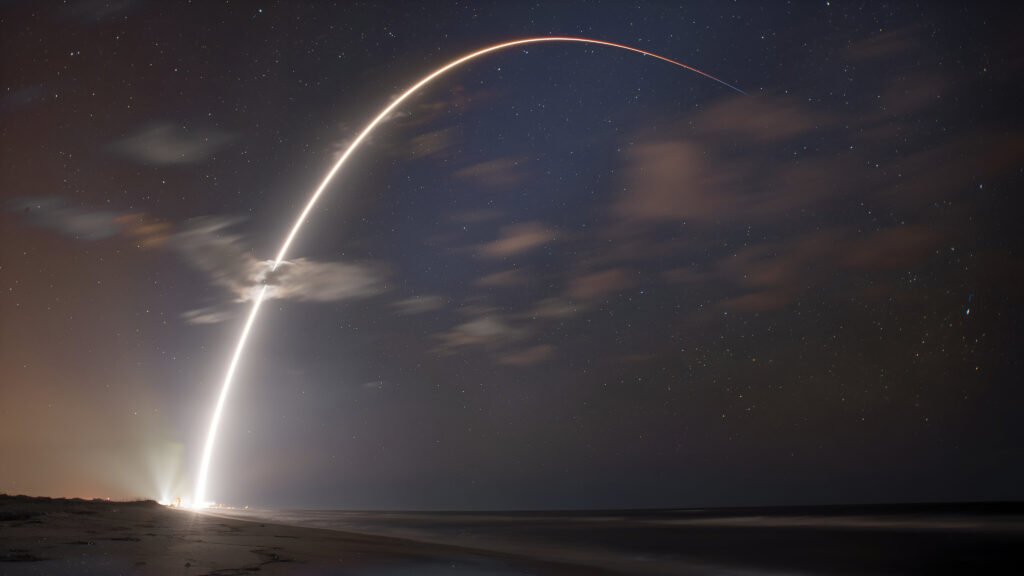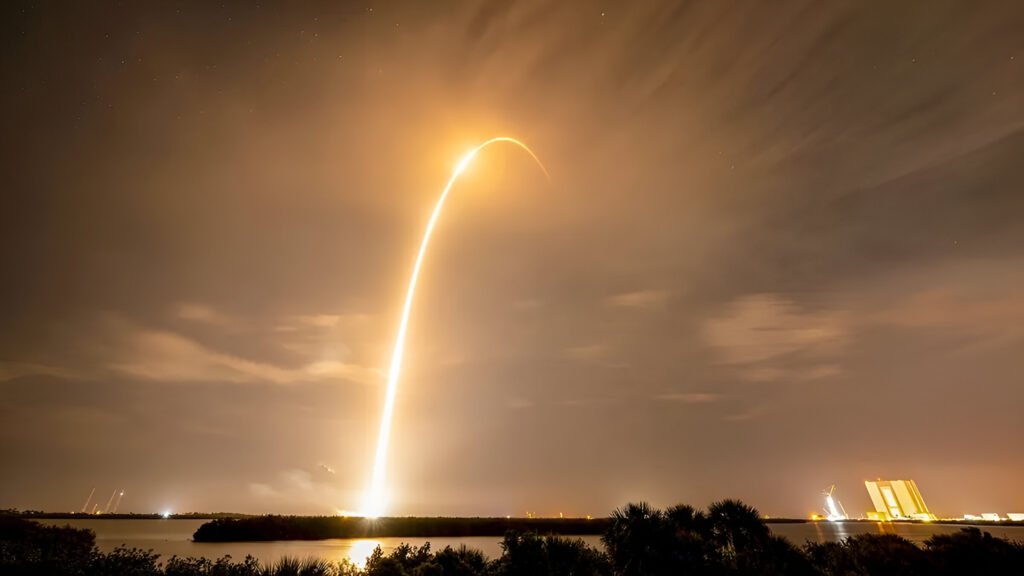
In a befitting celebration of Star Wars Day, SpaceX celebrated May 4th, 2025, with a strong reference to science fiction turning into reality. At exactly 4:54 a.m. EDT (0854 UTC), a Falcon 9 rocket—aptly named after the Millennium Falcon—blazed into the early morning skies from Launch Complex 39A (LC-39A) at NASA’s Kennedy Space Center in Florida. Its mission: to deliver the largest batch yet of next-generation Starlink satellites into low Earth orbit (LEO).
This most recent launch, Starlink 6-84, delivered 29 Starlink V2 Mini Optimized satellites, the largest and most sophisticated payload ever carried on a single Falcon 9 mission for SpaceX’s expanding satellite internet constellation. The occasion not only marked the determination of innovation but also the industry’s fast-paced pace, which SpaceX leads by overcoming aerospace frontiers.
A Powerful Liftoff
The launch occurred during the predawn hours, under skies that had only narrowly escaped heavy cloud interference. Meteorologists from the 45th Weather Squadron had warned of potentially thick layers of cumulus and anvil clouds due to a sea-breeze front moving across the Florida peninsula. But by launch time, Cape Canaveral had cleared, and Falcon 9 was able to take off on schedule.
As the rocket soared southeast, it took with it not only satellites but also the hope of further connectivity around the globe. The V2 Mini Optimized satellites on this mission have been upgraded and weigh approximately 575 kilograms (1,267 pounds) apiece—around 22% less than before. This reduced weight, as outlined in SpaceX’s 2024 Progress Report, allows every launch to deploy more network capacity to orbit.
Advances in Satellite Design
These satellites are a major technological step forward from the previous V2 Mini models that were originally launched in 2023. They have upgraded avionics, more advanced propulsion systems, and higher power capability. With the capacity to launch as many as 29 of these compact satellites per launch, SpaceX is not only growing its Starlink constellation but also streamlining operational effectiveness in the process.
This mission adds to an already massive Starlink network. To date, SpaceX has launched nearly 8,500 Starlink satellites, with over 7,300 still operational in LEO, according to satellite tracker and astrophysicist Jonathan McDowell. The company’s push to bring broadband internet to even the most remote corners of the globe continues to gain momentum—and credibility.

A Historic Booster Returns
While the launch itself was a feat, what followed only solidified SpaceX’s unmatched leadership in rocket reusability. Just over eight minutes after liftoff, the Falcon 9’s first stage booster—tail number B1078—returned to Earth, executing a flawless landing aboard the droneship A Shortfall of Gravitas in the Atlantic Ocean.
This marked the 20th successful mission and landing for this particular booster, which has previously launched notable missions including NASA’s Crew-6, SES O3b mPOWER-B, USSF-124, the Bluebird 1-5 satellites, and 15 other Starlink batches. It also marked the 107th landing on A Shortfall of Gravitas and the 441st overall Falcon booster recovery—a staggering achievement in the history of reusable spaceflight.
A Busy Year for the Space Coast
The Starlink 6-84 mission is SpaceX’s 38th orbital launch of the year from Kennedy Space Center and the neighboring Cape Canaveral Space Force Station. The frequency of these launches reflects the growing pace of the private space industry and SpaceX’s increasing dominance in both commercial satellite deployment and launch service reliability.
According to a Federal Aviation Administration operations advisory, SpaceX isn’t slowing down anytime soon. Another Falcon 9 launch is already scheduled for Tuesday, May 6, continuing the rapid-fire pace of Starlink deployments.
The Bigger Picture
Every Starlink launch brings SpaceX closer to its goal of building a low-latency, high-speed broadband internet service accessible across the globe. With each improvement in satellite design and launch capability, the network grows stronger and more resilient.
And on May the Fourth—Star Wars Day—the symbolism was not lost. A rocket christened after the Millennium Falcon, bearing cutting-edge internet technology, took off from Earth early in the morning, reminding us how close we are to actually living in a science-fiction-inspired future. As SpaceX goes about its work, the skies above grow more integrated, satellite by satellite.









